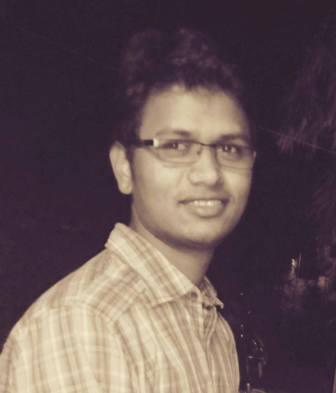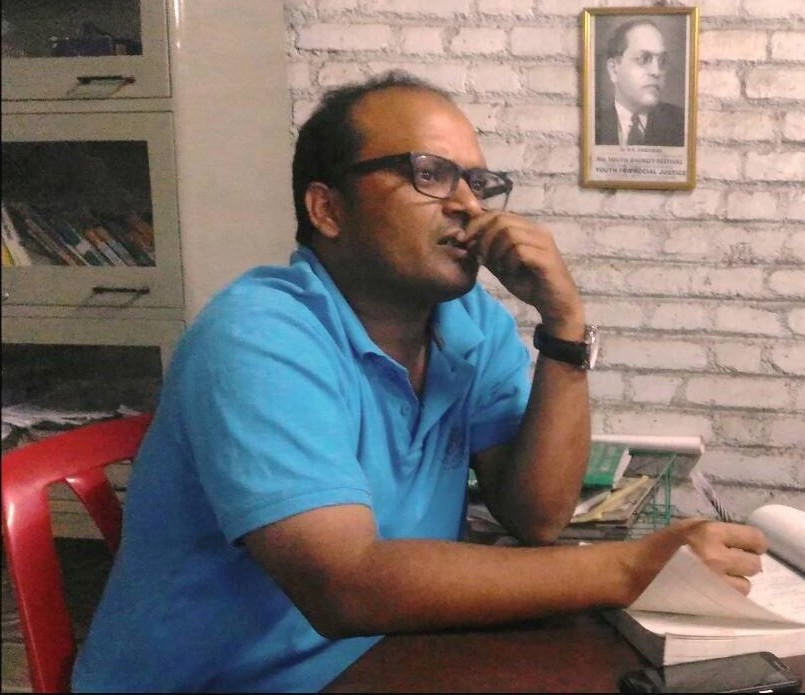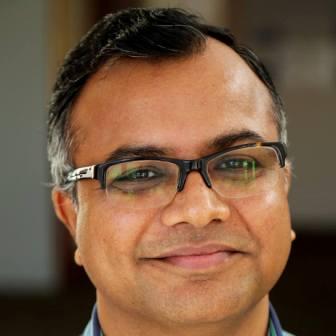Vinod Kumar
 State came into existence with the failure of human values in the society. As far as Marxist understanding is concerned, in the primitive society, there was no existence of private property and private family. The very existence of private property led to conflict in society. Where there is property there is greed, and greed devalued human morality. When some dominant individuals in society established a particular arrangement to sort out social conflict, gradually the state came into existence. Political institutions have been developed over a period of time, the nature of state also changed accordingly. The concept of nation-state is the product of Westphalia treaty in 1648. Modern state system runs on the basis of this conception of nation state.
State came into existence with the failure of human values in the society. As far as Marxist understanding is concerned, in the primitive society, there was no existence of private property and private family. The very existence of private property led to conflict in society. Where there is property there is greed, and greed devalued human morality. When some dominant individuals in society established a particular arrangement to sort out social conflict, gradually the state came into existence. Political institutions have been developed over a period of time, the nature of state also changed accordingly. The concept of nation-state is the product of Westphalia treaty in 1648. Modern state system runs on the basis of this conception of nation state.
The term nation has been defined from various perspectives. One simple definition is that it is a political community where people share a common culture, common religion, common language, common historical experiences, and common struggle for independence (in terms of earlier colonised countries). Benedict Anderson has given a modern definition of nation: ‘nation is the imagined political community’. He argued that ‘it is imagined because the members of the nation will never know most of their fellow members; they never meet them, never hear them, yet in the minds of each lives the image of their communion’. It is as community, because regardless of actual inequality and exploitation that may prevail in each, the nation is always conceived as a deep, horizontal comradeship. In short, nation has the capacity to legitimate inequality within it and exploitation of the people by their own fellow members. Moreover, Zernatto says, “at the time when the word “nation” acquired its modern meaning and became the synonym of the “people,” it meant “an elite” and specifically referred to an elite of representatives of cultural and political authority (Greenfeld, 2012: 11) Here, I would like to add the definition given by John Paul Sartre: ‘nation is the imagination of the well organised dominant community’.
In any nation, a particular dominant community keeps a strong hold on every aspect of people’s life. This community imposes its will arbitrarily, by using coercive forces. Here, drawing inspiration from Sartre’s idea, I attempt to apply it to the Indian nation. A particular community which is highly well organised, exploitative and coercive imposes its particular set of principles regarding nation on other weak and oppressed communities of the country. In order to make a strong nation-state there is a need to homogenise the country. People are forced to share common culture, religion, history, and to be nationalist. Nationalism needs to be penetrated among the people in order to strengthen the nation. In this process, a dominant community takes control over society and develops its own rationality and logistics to spread national sentiment among fellow members.
In India, Hinduism (Brahmanism) emerged as a hegemonic political ideology when the Muslims entered the Indian scene. It is significant that Ram Mohan Roy used for the first time the word ‘Hinduism’ in 1816-17 that was earlier called as Varnashram Dharma, Sanatan Dharma or simply Brahmanism. In pre-modern India, the term ‘Hindu’ was used as a cultural and geographical marker than a religious category. Hinduism (Brahmanism) as we know today is a modern construction of the upper caste intellectuals. Romila Thapar terms this phenomenon as ‘syndicated Hinduism’, a construct which was more political than religious. This Hinduism seeks to encapsulate all the indigenous sects, denomination, and practices into one entity in a hegemonic manner (Mani 2015: 43). However, from the beginning of Vedic period, a particular kind of cultural hegemony has been working – that is Brahmanism. The mixture of religion and philosophy, history and tradition, customs and social structure, which in its wide fold included almost every aspect of the life of Indians, and which might be called Brahmanism or Hinduism, became the symbol of nationalism (ibid, p 50).
Moreover, during the freedom struggle, the so-called forefathers of the struggle never challenged the brahmanical hegemony (religious, ritual, and caste based social structure) even though they portrayed themselves as secular. Over a period of time, a Brahmanic outlook was fine tuned in the nationalist idiom by Rammohan Roy, Dayananda Saraswati, Bankimchandra Chatterjee, R.C. Dutta, B.G. Tilak, Vivekananda, Ranade, Aurobindo, Savarkar and others. Gandhi never approved of the autonomous activities of the oppressed communities of the country. They (oppressed) had to be always guided by the privileged-caste notables (Mani 2015: 47). Even Nehru, so-called secularist, vehemently believed that Hinduism is the basis of nationalism, and also defended the caste system by saying that it is better than slavery. In the independence movement there were three main variably organised forces which were working for a dream of a new independent nation: first, Congress with their so-called secular nationalism assimilating different ideas within its hegemonic structure dominated by upper castes; second, Hindutva forces (Hindu Mahasabha, RSS, etc) which were working for Hindu Rashtra without participating in confrontation with colonial rule; third, suspicions of Muslims towards the so-called Hindu majority gave birth to Muslim League that led to the partition and got a nation on the basis of religion. At the same time, unorganised communities (dalit-bahujan and tribes) that constitute majority in the country, were just parts of the crowd without any share in decision making. However, the leader of the downtrodden, Babasaheb Ambedkar, had his own vision about the society and nation. But in this battle of national struggle, the Brahmanical dominant group with a secular mask, in the form of the Congress, succeeded. It was the old Brahmanic religion which was effectively supplanted by the new nationalist politics of hegemony.
After independence, these brahmanical forces had a strong grip over the newly created political system. Now the nation was guided by a handful of upper castes, particularly Brahmins. The entire political system, economic system and bureaucracy were dominated by these Brahmans despite the progressive vision in the constitution that calls for equality, liberty, and fraternity. These values were always relegated to the cold storage by the Brahmans (upper castes). These upper castes have developed a language of nationalism according to their own vested interests. In India, it is the well organised dominant community (upper castes) which decides the rights and duties of the members of their imagined community (nation). The intellectuals co-opted other exploiting sections, and together they came forward to speak in the name of the nation, as its sole representatives. This gave them a hammer to crush dissent from below, terming it as ‘anti-national’, accusing them of lack of faith in the nation. One can see the victims of such kind of accusations in the tribal areas where the adivasis are being projected as naxalites, minorities are branded as terrorists and dalits as anti-nationals.
What should one do and what should one not do? What are the criteria of freedom, one has to say what and what one should not, who should one marry and who should one not, what one has to eat and what not, what belief one has to follow and which one not? All these are decided by the culturally, socially and economically dominant community of the country. Recent political environment witnessed a series of incidents, whether it is in Hyderabad Central University where Rohith Vemula’s institutional murder was carried out, or the JNU row over so-called anti-national sloganeering – in both cases, one sees a Brahmanical group, with its own set of principles of nationalism that it imposes upon diverse and dissenting views and labels them as anti-national. Symbols, slogans, images, are used to inject nationalism in the people. At times, it becomes the normative parameter to judge people, as nationalist or anti-national. So-called nationalists (Hindutva brigade) are trying to inject the brahmanical (Hindu) nationalism among Indianx for their dream of a Hindu Rashtra, and have developed a communal language of ‘Hindi, Hindu, Hindustan’. They are penetrating their brahmanical nationalism among the dalits and adivasis through their projects like Banvasi Kalyan Ashram, Sarswati Shishu Mandir, Durga Vahini, Shakhas and many such other activities.
The symbol of Bharat Mata that emerged through freedom struggle from Bengal and evolved as a communal image represents the religious nature of the nation. The much emphasised image of Bharat Mata and its projection as a Hindu goddess is manifestation of Hindu Rashtra of the Hindutva brigade. Chanting Bharat Mata ki Jai, Vande Mataram, worshiping the picture of Bharat Mata are very much Brahmanical. Religion and nationalism is interconnected to each other. Contractors of the nation and religion are examining patriotism of the different people who follow different beliefs, religions, cultures and nationalities. Often, these contractors create a threat to the oppressed nationalities of the country in the name of nationalism. The present government is replete with religious leaders in the parliament and they issue the guidelines to be a proper nationalist. “Those who are not Hindu they have to go to Pakistan (one has to be Ramjade, there is no place for haramjade).” Hinduism and nationalism have been projected as synonymous despite the country having a secular constitution. To be a faithful nationalist one has to follow Hindu culture, social order and rituals. In this process of hegemonisation, the marginalised communities have always been suppressed.
However, India represents a diverse grouping of ethnic, religious, linguistic, and regional nationalities but their fate is decided by a well organised upper caste dominant community. Dalits, Adivasis and minorities of this country are the victims of this nationalism. Historically, Dalit-Bahujan culture has always confronted Brahmanism. In this battle, they have been suppressed by Brahmanism, and have been branded as enemies of society, termed as divisive forces and anti-nationals (for instance, Rohit Vemula). The challenge to the Brahmanical religious and social order has been projected as a challenge to the nation. Rationalist intellectuals like Kalburgi, Govind Pansare and Narendra Dabolkar have been killed by Hindu fringe elements on this ground only. In Kashmir, Muslims have their political problem with the nation, but the problem has not been solved in a peaceful political manner. They are fighting for their right to self-determination from the beginning, but their voices have been suppressed by the barrel of the gun boosted by the Armed Forces (Special Powers) Act (AFSPA). Minorities (particularly Muslims) are being projected as disloyal to the nation and branded as terrorists. Often these minorities face well organised communal riots; for instance, the Gujarat riots, Kandhmal riots in Orissa and the recent Muzaffarnagar riots in Uttar Pradesh are well organised “riots”. North East tribals are facing problem from such kind of nationalism and political arrangement. The political elite are dealing with these people with military (AFSPA) rule. Naxalite movement is the result of the failure of the new political system. Brahmanism in the form of feudalism causes the Naxalite problem, the government is dealing with this problem with the use of armed forces. Corporate and political elites are looting the jal, jangal and jameen of Adivasis. Whoever challenges this exploitation is branded as a naxalite and terrorist. In the name of nationalism, a dominant community of the country is exploiting all the resources, enjoying all the power and privilege. So, this well organised dominant community is spreading hegemonic nationalism which excludes the marginalised sections of the society.
~~~
Vinod Kumar is a Phd candidate in Center for West Asian Studies, School of International Studies, Jawahar Lal Nehru Unversity,










